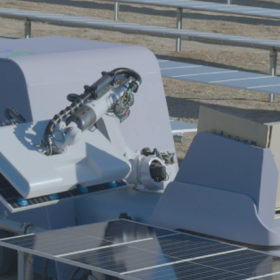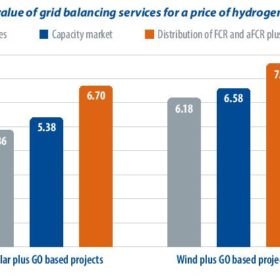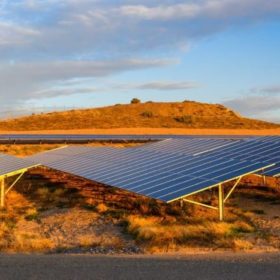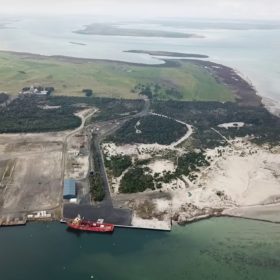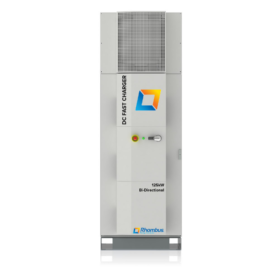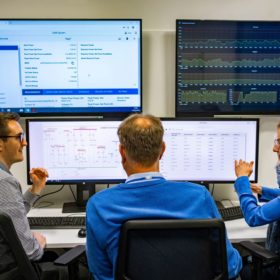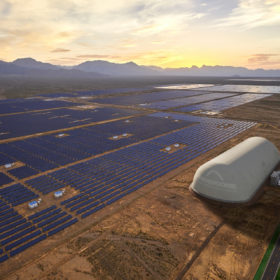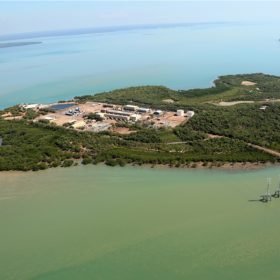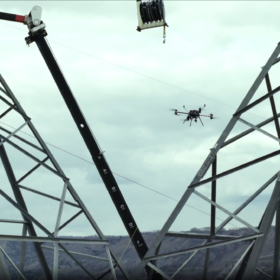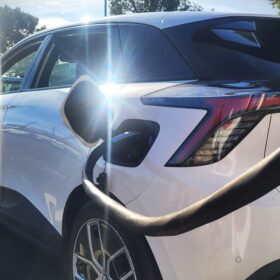New robot for solar plant construction
The AI-enabled robot is claimed to ensure faster and more efficient deployment of solar modules in utility scale projects.
Sunday read: The new entrant to the energy sector
Green hydrogen can play a vital role in decarbonising the economy and enabling countries to reach net-zero emissions. The economics of producing green hydrogen from electrolysis are maturing as developers scramble to meet expected future demand. Everoze partner Nicolas Chouleur and Neoen hydrogen expert Sacha Lepoutre discuss a case study that shows how stacking different revenue streams could improve the economics of renewable energy projects.
Saturday read: Shining future of transport
Urban transportation is key to modern civilization. It has enabled humans to travel long distances and is one of the building blocks of industry and leisure. But it has come at a cost. In the first quarter of 2022, pv magazine’s UP Initiative will focus on the rise of e-mobility. We will examine urban transportation and the role electric vehicles, trains, and two- and three-wheelers can play in greening the electricity grid. In addition to technological innovation, we will also investigate market projections, the policies and infrastructure required, and the role solar and storage will play in taking this nascent industry full throttle.
CSIRO report reveals renewables remain cheapest new-build power
The latest estimates of electricity generation costs in Australia have confirmed solar and wind continue to be the cheapest sources of new-build electricity generation, even when factoring in additional integration costs such as storage and new transmission infrastructure.
Longi wants to reach electrolyser capacity of 2 GW by 2023; investor enthusiasm for Port Anthony hydrogen project
Australian green energy company Port Anthony Renewables’ oversubscribed capital raising exercise has put a fresh $3 million directly into its commercial scale hydrogen precinct ahead of a planned Australian Securities Exchange (ASX) listing next year. Meanwhile, Longi reportedly plans to build 1.5 GW of production capacity of electrolysers next year, up from 500 MW today.
Variability compounding complexity compounding risk: the state of play in the NEM today
Australia’s energy system was already a complex web, but it’s now transforming into the work of a labyrinth spider, which build tunnels so complicated and thick they look like white silk vortexes. You get the picture. Or you will from reading the Generator Insights 2021 report published today.
Ever heard of synchroinverters? Grid-stabilising devices connecting renewables to distributed energy resources
A U.S.-Israeli consortium is developing synchroinverters – inverters that mimic a synchronous generator and are able to actively respond to the grid’s frequency changes while stabilising the voltage. The new devices are expected to do this simultaneously and provide grid stability services in less than 16.67 milliseconds.
Grid software solution could more than double network capacity for renewables with no new infrastructure
With Scottish company Smarter Grid Solutions having already seen its software deployed in the U.K., a pilot project in New York State has been a resounding success for a grid solution the NREL has predicted could unlock swathes of network capacity without the need for new power lines.
Storing solar power with compressed carbon dioxide
An Italian company has developed a system that can store energy from wind, solar and grid electricity by compressing and using CO2 without any emissions. The system draws CO2 from an inflatable atmospheric gas holder, stores it, and uses it to produce power again, when demand for stored energy arises.
Hitachi wins tender for Darwin-Katherine ‘Big Battery’, set to pay for itself within five years
Hitachi Energy has won Northern Territory Labor’s tender for the Darwin-Katherine ‘Big Battery’, which is expected to unlock more capacity for residential and industrial PV, generate cost savings of $9.8 million and pay for itself in approximately five years.
